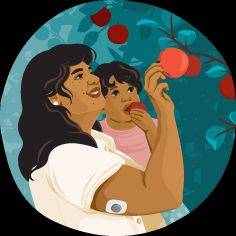Certain practices may help support a safe fast. This includes staying hydrated and including enough protein in your meals on the days you eat.
There are many different ways to fast.
Intermittent fasting is an increasingly popular eating pattern that involves not eating or sharply restricting your food intake for certain periods of time.
This fasting method has been linked to a range of potential health benefits, including keeping blood sugar levels stable and reducing inflammation in the body.
Such effects are linked to longevity and a lower risk of disease. Thus, people who fast regularly often hope to lose weight or live a healthier, longer life. However, fasting can be dangerous if not done properly.
Here are 10 tips to help you fast safely.
There is no single way to fast, meaning that the duration of your fast is up to you.
Popular regimens include:
- 5:2 fasting: Restricting your calorie intake for 2 days per week.
- 6:1 fasting: This pattern is similar to the 5:2, but there’s only 1 day of reduced calorie intake instead of 2 days.
- “Eat Stop Eat”: A 24-hour complete fast one to two times per week.
- 16:8 fasting: This pattern involves only consuming food in an 8-hour window and fasting for 16 hours a day, every day of the week.
- Alternate day fasting: This involves fasting for 24 hours on alternate days.
Most of these regimens advise short periods of fasting for 8–24 hours. However, some people choose to undertake much longer fasts of 48 and even up to 72 hours.
Longer fast periods increase your risk of complications. This includes:
- dehydration
- irritability
- mood changes
- fainting
- hunger
- lack of energy
- being unable to focus
The best way to avoid these side effects is to stick to shorter fasting periods of up to 24 hours — especially when you’re just starting out.
If you want to increase your fasting period to more than 72 hours, you should seek medical supervision.
In general, fasting involves the removal of some or all food and drink for a period of time.
Although you can remove food altogether on fast days, some fasting patterns, like the 5:2 diet, allow you to consume up to around 25% of your calorie requirements in a day.
If you want to try fasting, restricting your calories so that you still eat small amounts on your fast days may be a safer option than doing a full fast.
This approach may help reduce some of the risks associated with fasting, such as feeling faint, hungry, and unfocused.
It may also make fasting more sustainable since you likely won’t feel as hungry.
Even mild dehydration
Most health authorities recommend the 8×8 rule — eight 8-ounce glasses, or just under 2 liters (L) in total, of water from food and bevarages every day — to stay hydrated.
However, the actual amount of fluid you need — although likely in this range — is quite individual.
Because you get 20–30% of the fluid your body needs from food, it’s quite easy to get dehydrated while fasting.
Many people aim to drink more than 8 cups (2 L) of water during a fast. However, your thirst should tell you when you need to drink more, so listen to your body.
Avoiding eating on fast days can be difficult, especially if you are feeling bored and hungry.
One way to avoid unintentionally breaking your fast is to keep busy.
Walking and meditating are activities that may distract you from hunger but don’t use up too much energy.
However, any activity that’s calming and not too strenuous would keep your mind engaged. You could take a bath, read a book, or listen to a podcast.
It can be tempting after a period of restriction to celebrate by eating a huge meal.
However, breaking your fast with a feast could leave you feeling bloated and tired.
Additionally, if you want to lose weight, feasting
The best way to break a fast is to continue eating how you typically would and revert to your regular eating routine.
During a fast, you may feel tired, hungry, and irritable, but you should never feel unwell.
To keep yourself safe, especially if you are new to fasting, consider limiting your fast periods to 24 hours or fewer and keeping a snack on hand in case you start to feel faint or ill.
If you do become ill or are concerned about your health, make sure you stop fasting straight away.
Some signs that you should stop your fast and seek medical help include:
- tiredness
- weakness that prevents you from carrying out daily tasks
- unexpected feelings of sickness or discomfort
Many people start fasting as a way to try to lose weight.
However, being in a calorie deficit doesn’t mean you will lose muscle in addition to fat as long as you eat enough protein and include daily physical activity
One way to minimize muscle loss while fasting is to ensure you are eating enough protein on the days you eat.
Additionally, if you are eating small amounts on fast days, including some protein could offer other benefits, including managing your hunger.
Many people who fast are trying to improve their health.
Even though fasting involves abstaining from food, it’s still important to maintain a healthy lifestyle on days when you are not fasting.
Healthy diets based on whole foods are linked to a wide range of health benefits, including a reduced risk of cancer, heart disease, and other chronic illnesses.
You can make sure your diet remains healthy by choosing whole foods like:
- meat
- fish
- eggs
- vegetables
- fruits
- legumes
If you fast regularly, you may miss out on essential nutrients.
This is because regularly eating fewer calories makes it harder to meet your nutritional needs.
In fact, people following weight loss diets are more likely to be deficient in essential nutrients like iron, calcium, and vitamin B12.
Those who fast regularly should consider taking a multivitamin for peace of mind and to help prevent deficiencies.
That said, it’s always best to get your nutrients from whole foods where possible.
Some people find that they are able to maintain their regular exercise regimen while fasting.
However, if you’re new to fasting, it’s best to keep any exercise to a low intensity — especially at first — so you can see how you manage.
Low-intensity exercises could include walking, gentle stretching, and housework.
Most importantly, listen to your body and rest if you find it hard to exercise while fasting.
Although fasting for short periods is generally considered safe, the following populations shouldn’t attempt to fast without consulting a medical professional:
- people with a medical condition like heart disease or type 2 diabetes
- individuals who are trying to conceive
- those who are pregnant or nursing
- people with underweight
- individuals who have experienced an eating disorder
- those who have problems with blood sugar regulation
- people with low blood pressure
- individuals taking prescription medications
- those with a history of amenorrhea
- older adults
- adolescents
Fasting is the practice of abstaining from food and beverages for extended periods. Depending on how it’s done, it may boost your health.
People may choose to fast for dietary, political, or religious purposes. One popular method is intermittent fasting, in which you cycle between periods of eating and fasting.
To stay healthy while fasting, it’s best to keep fast periods short, avoid intensive exercise, and stay hydrated.
Eating enough protein and keeping a balanced diet when you’re not fasting can also maintain overall health and ensure successful fasts.






